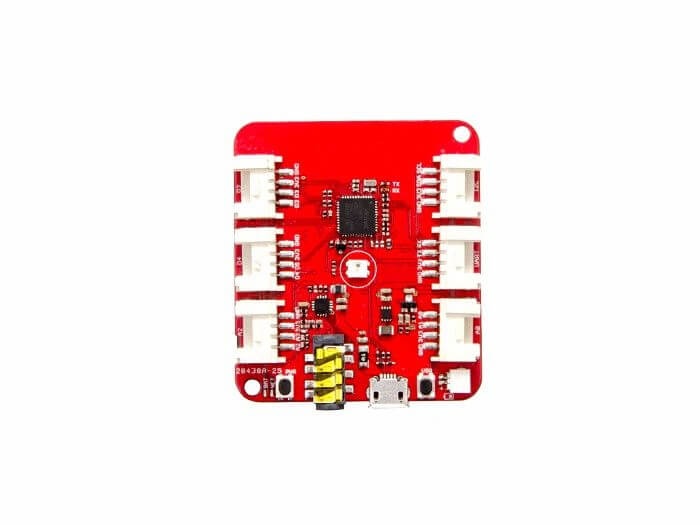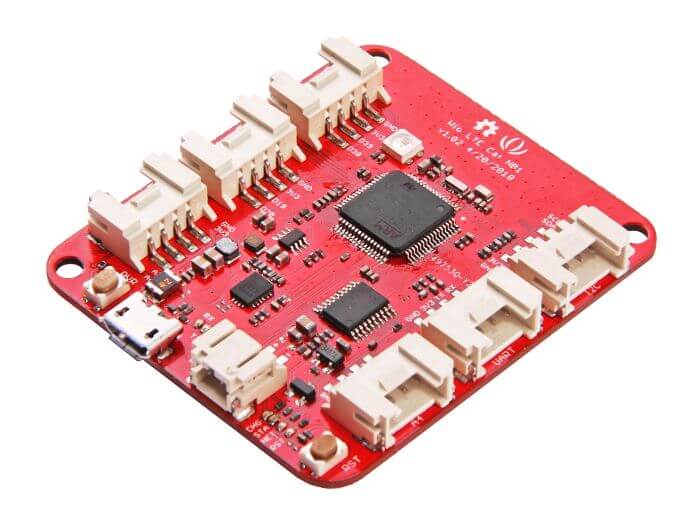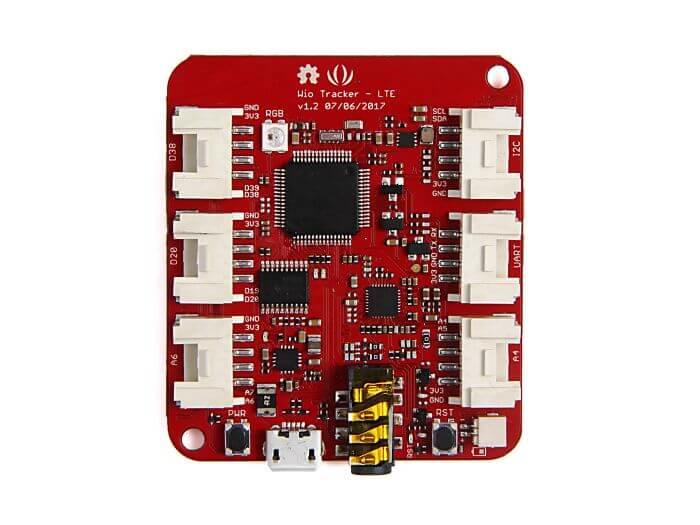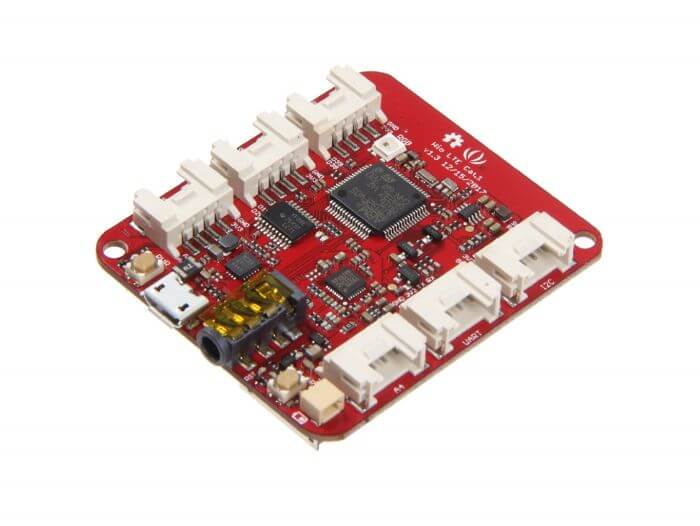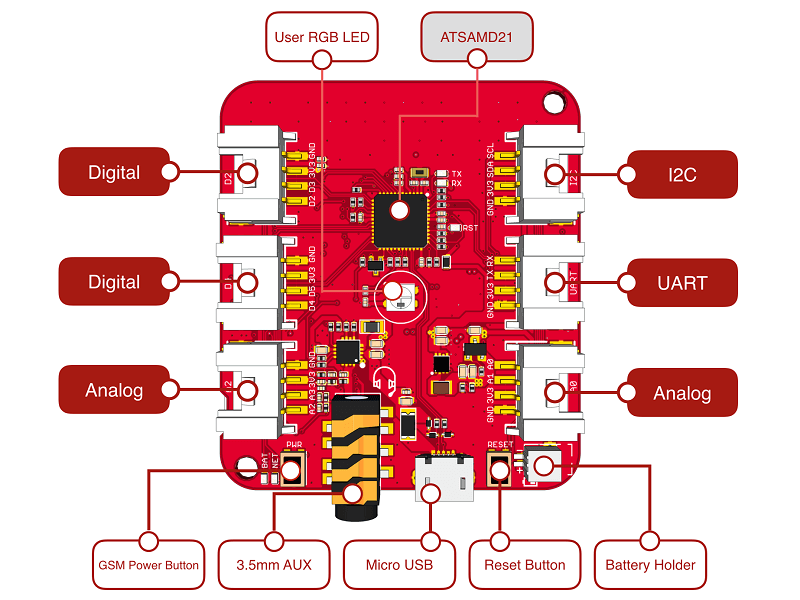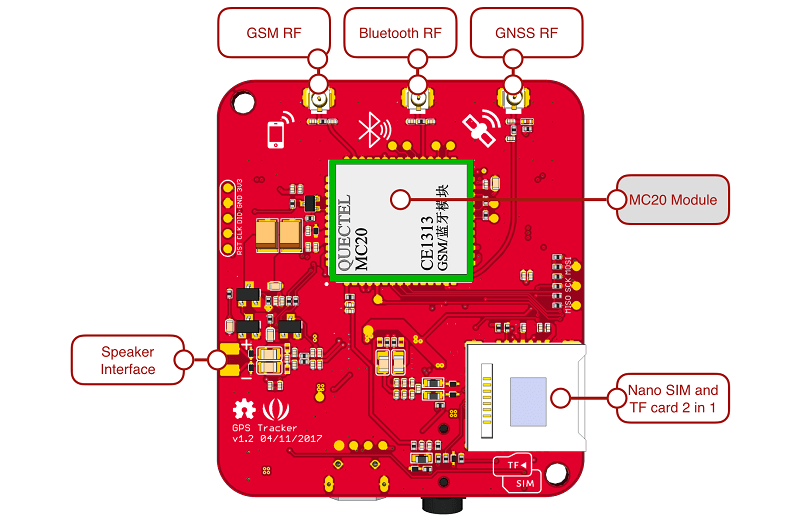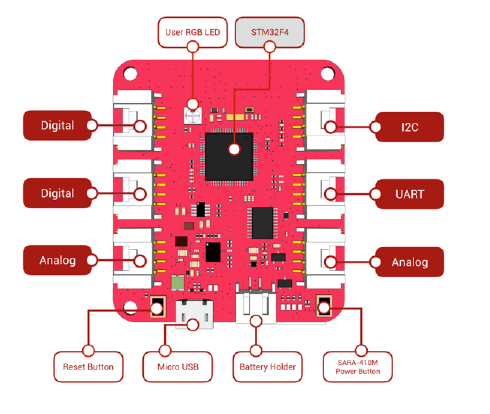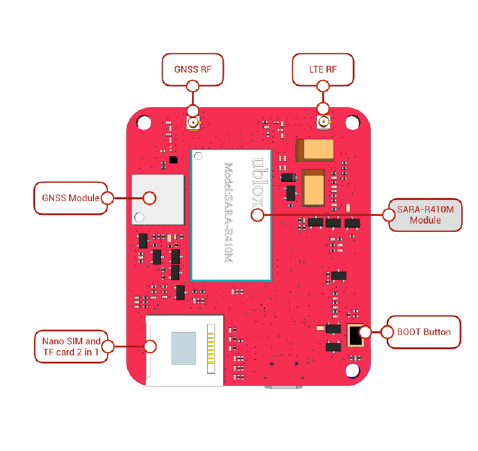Wio: Implement IoT the simpler way
Wio is SeeedStudios’ very own IoT platform that’s designed for users to create IoT solutions the easier way. It does so by virtualizing plug-n-play modules to RESTful APIs with mobile apps. This means you no longer have to solder, use jump wires and knowing what’s electric engineering, micro-controller programming, network programming, and IoT protocols handling.
Does it sound attractive already?
If that doesn’t sound good enough, there’s more!
Wio simplified process of just installing and app on your mobile phone makes prototyping easy, allowing you to build a simple IoT project in only about 5 minutes!
Can’t wait to get started?
In this blog, I’ll be introducing you to:
- The various Wio related products
- Guide in purchasing a suitable one
Wio Link: The very first Wio platform

Wio Link is the first product introduced as an associated Wio platform. It’s an ESP8266 Soc based open-source WiFi development board.
And yes, no hardware programming, no breadboard, no jumper wires, and no soldering needed!
Here’s a video on how easy it is in building your IoT with the Wio Link:
Hardware overview and features:

Features:
- Visual configuration instead of microcontroller programming
- OTA (Over-The-Air) Firmware Updates
- Plug-n-Play Groves
- Bring real world to virtual platform. All sensors become virtual RESTful API.
- Managed by Android & iOS Apps
- IFTTT supported by Seeed’s Channel
Main Technical Details:
- Dimensions: 55mm x 48mm x 6.5mm
- Weight: G.W 48g
- Wifi-Network: 802.11 b/g/n
- Flash Memory: 4MByte
- Operating Voltage: 3.3V
- Micro USB: 5V
The Wio Link can be well applied for the following:
- Smart Home
- Intelligent environmental monitoring
- Funny Toys
- Web of Things
- Internet of Things
For further information on the Wio Link and how to start using it, you can head over here
Uncertain of how to start building? Check out our Wio Link Starter Kit

This kit is aimed at starters which includes frequently used modules at a cost-effective price point. It helps you get started on building your first project.
The wide variety of Grove modules included allows you to explore what’s best for you as well.
The starter kit is packed with:
- 1x Grove – Button
- 1x Grove – Relay
- 1x Grove – Temp&Humi Sensor
- 1x Grove – Digital Light Sensor
- 1x Grove – WS2812 Waterproof LED Strip – 30 LEDs 1 meter
- 1x Grove – 3 Axis Digital Accelerometer (±1.5g)
- 1x Wio Link
- 1x Mico USB Cable – 48cm
Wio Node: The cheaper, smaller, lighter brother of the Wio Link

The Wio Node shares most of its features with its original brother, the Wio Link. It consists of the same capabilities that allow for the fast, simple, and convenient building of IoT applications.
Its similar features include:
- ESP8266 based open-source WiFi development board
- Supports Plug-n-Play Groves
- Visual Configuration
- OTA (Over-The-Air) Firmware Updates
- RESTful APIs
- IFTTT Application
- Andriod & iOS APPs
Main Technical Details:
- Dimensions: 28mm x 28mm x 6.7mm
- Weight: G.W 10G
- WiFi Network: 802.11 b/g/n
- Operating voltage: 3V3
- Flash Memory: 4MByte
- Micro USB: 5V
With the smaller form factor, comes compromises. There are only two Grove connectors compared to the 6 on the Wio Link. However, it still offers 2 Digital I/O, 1 Analog Input, 1 UART and 2 I2C interfaces to communicate with up to 42 and more Grove modules.
Thanks to its design, it can be used to build an IoT system where a large amount of “things” are required to be connected to the internet. Detailed instructions/tutorials can be found at http://iot.seeed.cc/ and the Wio Community.
For more information on the Wio Node and its setup, you can head here
Wio Trackers
We’ve seen the Wio Node and Wio Link, both built as a WiFi development board. What’s lacking in both of those boards are GPS tracking capabilities. So, do you want to track accurate GPS locations by just using a single board?
The following boards are designed for GPS tracking capability, each with their own unique propositions.
They are all still indeed compatible with the wide array of grove modules for other forms of projects.
Wio Tracker: Reconsider using GPS/GPRS shields with this all in one GPS development board
The convenience and ease of using a single development board instead of placing GPS/GPRS shields for your Arduino/other development boards are what the Wio tracker offer.

This is the Wio Tracker, Arduino and Grove compatible board that integrates Bluetooth 3.0 and GPRS for accurate and ease of GPS tracking. The GPRS provides a moderate bandwidth which allows immediate interaction between users and devices.
Arduino and Grove compatibility opens up for quicker development through libraries and a supportive community. The availability of 6 Grove connectors opens up many other applicational opportunities as well.
Arduino developing only?
The GPS library that’s available with the Wio Tracker can be developed in C/C++ as well, not limiting to Arduino.
Hardware Overview:
Key Features:
- Connects with GPS + BeiDou + QZSS – Allowing for Higher Precision Location Around the Globe
- 99 Channels Allows for Quicker Lock Times
- GLP Mode – 40% Power Consumption for Normal Mode
- LOCUS Technology – Records Navigation Data Automatically
- GPS, GSM, and BT Antennas Included
- GSM AT Commands: GSM 07.07, 07.05 and enhanced AT Command
- Bluetooth 3.0 with SPP Profile and HFP-AG Profile
- 6 Grove Connectors (2x Digital, 2x Analog, 1x UART, 1 I2C)
- Arduino IDE Compatibility
- Small Form Factor (54.7mm x 48.2mm)
- Nano SIM and microSD 2-in-1 Socket
For product and configuration details, you can head here
Wio LTE – Cat M1/NB1: The IoT focused option

This is the Wio LTE, built to enhance the already simple Wio building experience. Its inclusion of LTE categories M1 and NB1 will help the board operate at lower frequencies, allowing for longer range and more penetration capability. Power consumption is lower than other LTE technologies as well.
IoT applications on this board are limitless with its capability to operate in all regions and major GNSS including GPS, BeiDou, GLONASS and Galileo.
Fear of having to develop in an unfamiliar environment?
Fear not, the Wio LTE is powered by an STM32 Cortex-M4, with support for Arduino, MBed, and Espruino. This allows you to choose the one that you’re most comfortable with.
Hardware Overview:
Features:
- STM32, ARM Cortex-M3, CPU running up to 168MHZ
- 1Mbytes Flash
- 192+4KBytes RAM
- Operating voltage: 3.3V
- Low power modes: Sleep/Standby/Stop
- CRC-32 Generator
LTE:
- LTE CAT M1 and NB-IoT, Cat M1 Half-duplex (375 kb/s DL and UL) Cat NB1 Half-duplex (27.2 kb/s DL, 62.5 UL)
- Embed protocol: TCP/UDP/FTP/HTTP/HTTPS/FTPS/TLS/MQTT/CoAP
GNSS:
- GPS/GLONASS
- 2.5m CEP(GPS), 4m CEP(GLONASS)
Peripherals:
- 1 x USB for power supply and DFU
- JST 1.0 connector for battery
- 3 buttons
- Nano SIM and TF card 2 in 1 socket
Grove ports: 2 Digital, 2 Analog, 1 UART, 1 I2C
For more information on pairings and suitable applications, you can head here
Need something more accurate and powerful? Here’s a region-based LTE tracker:
Wio LTE US Version – 4G, Cat.1, GNSS, JavaScript (Espruino) Compatible

If you’re looking for more/an upgrade from the Wio tracker and Wio LTE – Cat M1/MB1, this tracker is for you. It’s the Wio LTE US version, optimized for broadband IoT applications with Worldwide LTE and UMTS/HSPA+
*Note: There are 4 different versions of the Wio LTE for different regions. Do select the one you’re in
Other Product Features:
- Embedded power management unit (PMU) featuring ultra-low deep-sleep current consumption
- GPS/BeiDou/GLONASS/Galileo and QZSS
- Transplantable and expansible AT Command Library for Wio Tracker
- Arduino IDE compatible
- 6 Grove Connectors
- Nano SIM and TF card 2 in 1 socket
Product Applications:
- Pedometer
- Smart Ski
- Smart two-wheeler
- Sharing bicycle
- Pet tracking machine
- Children location watch
- Smart watch
- Transportation location system
- Vehicle location system
- Property safety
For further details and configuration, you can head here
What’s different? (Compared to the Wio LTE – Cat M1/MB1)
- Smaller form factor
- Compatible with QZSS
- Full compatibility with Arduino IDE instead of partial
- Includes Antennas (2x LTE Antenna, 1x GPS Antenna)
- Faster data transmission speeds
- Max 10Mbps (DL)
- Max 5Mbps (UL)
- Supports SMS and Audio modes
- Higher precision of <2.5m CEP
What makes the Wio LTE an upgrade from the WIO tracker?
- Wio LTE supports LTE (4G) communication which is faster than the 2G that WIO tracker is using
- Wio LTE supports 5 different GNSS – GPS, Beidou, GLONSS, Galileo, and QZSS
- Wio LTE runs on STM32F405RG MCU, 5 times faster than the WIO tracker
- Flash and Ram raised to 1Mbytes and 192+4k bytes
Wio LTE EU Version v1.3-4G, Cat.1, GNSS, Espruino Compatible

This WIO LTE shares similar features as the US version, though it’s designed for the EU region. You may refer to the above section for its product features or head here for a detailed version.
Despite that, there’s a difference that can be pointed out:
| US | EU | |
|---|---|---|
| LTE Bands | FOD: B2/B4/B12 | FOD: B1/B3/B5/B7/B8/B20 |
| 3G Bands | WCDMA: B2/B4/B5 | WCDMA: B1/B5/B8 |
| GSM | / | 900/1800 |
These differences are due to the differing module variants that are being used to suit each region’s network provider/system. Product features and attributes remain unchanged.
Do you know?
This product has been regularly updated based on user feedback and suggestions. The latest update consists of changes in the power circuit:
- Change the PMIC (Power manage IC) into MP2617, a more stable option
- Removal of DC-DC Module which supplies for the Lte Module. Instead, the Lte Module is now powered by the main circuit/Lipo battery
- Add two 100uf capacitors for better power stability
Summary
Overall, Wio is a good way of developing IoT solutions and is suitable for the general public due to its ease of usage.
If this is the first time you’ve heard of Wio or want to get a general feel of its capabilities, I would recommend the Wio Link or Wio Node.
GPS trackers:
Although the LTE version of the tracker is an upgrade from the 2G version, the 2G version can still be easily updated to the LTE version through transplantable and expansible AT command library.
Thus, if you’re looking for that cost-effective GPs capable option, this Wio Tracker is the way to go.
For the best precision and accurate readings, the Wio LTE EU and Wio LTE US version are your best pick.
